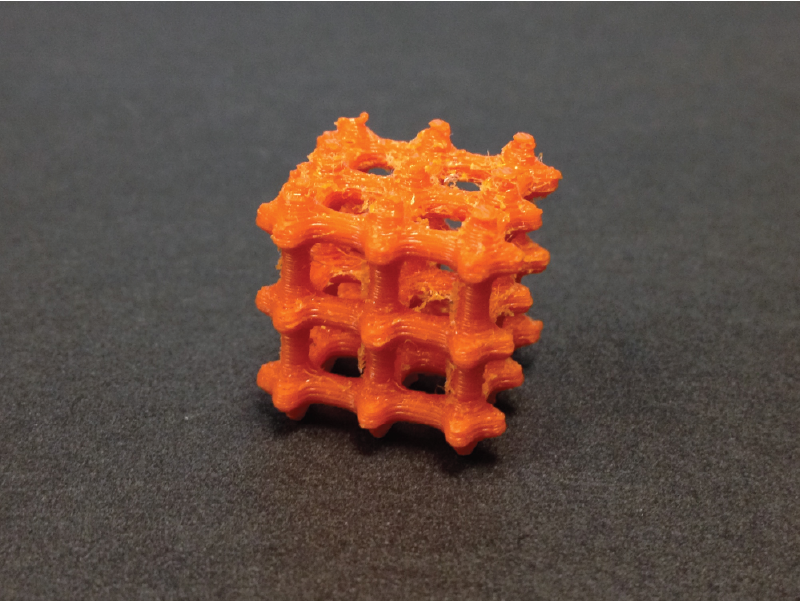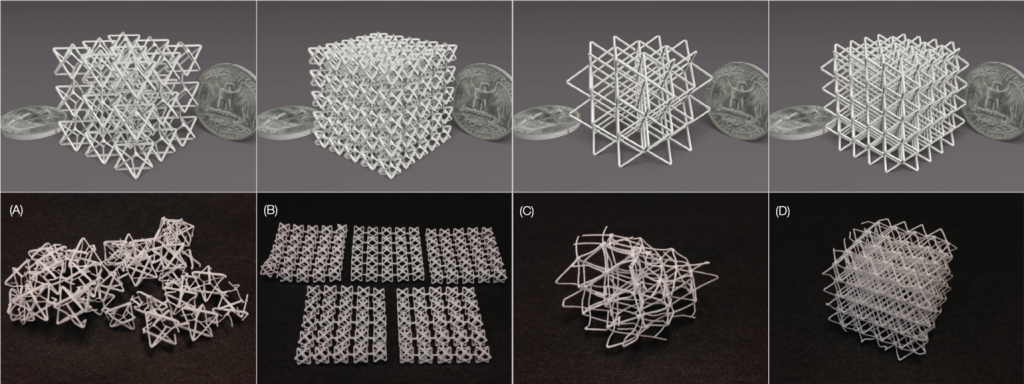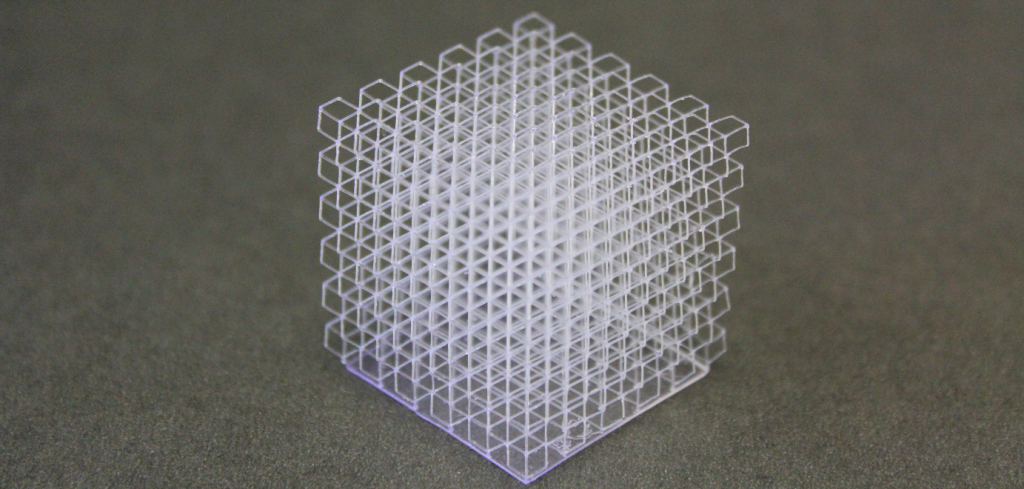Qingnan Zhou quite simply has a fascinating fascination with materials in terms of microstructures in 3D printing as well as how they hold up under different fabricating scenarios. We’ve reported on his previous work regarding 3D printed microstructures, and are now enjoying the enlightenment to be found within the first part of his latest research, ‘A Study in Fabricating Microstructures (Part 1).’
The New York City-based designer is dedicated to researching geometry processing and fabrication, with a focus on analyzing structure, mesh generation and–as you will certainly see here–pushing the limit of 3D printing technologies as much as possible.
Bringing up a very astute point regarding 3D printing and the fact that difficulty or ornateness in 3D printing isn’t logically connected to time and money, Zhou and a time of other individuals that he collaborated with, including Julian Panetta, Luigi Malomo, Nico Pietroni, Paolo Cignoni and Denis Zorin take us on a journey of sampling quality throughout the world of the complexity paradox, pointing out that due to this wonderful glitch in the universe, artists and designers have in many cases been able to live out their wildest dreams in fabrication.
“I hope to share my experience in 3D printing flexible microstructures, where the thickness of each strut ranges from 0.2mm to 0.5mm,” begins Zhou as he takes us on a journey into the world of 3D printing in Fused Deposition Modeling (FDM), Selective Laser Sintering (SLS), Stereolithography (SLA) and Direct Light Modeling (DLM).
Heading to the FDM printer, Zhou found that using a Dimension Elite courtesy of FabLab Pisa yielded some rather sad, inaccurate results.
“There are visible artifacts such as staircase and dangling strands of extruded material,” said Zhou.
With the Prusa i3, again the results were pretty sad and droopy, showing that while this popular 3D printer may have sway with makers around the world, it wasn’t up to snuff for printing a cube with soft PLA at a layer thickness of 0.3mm, without any support. As Zhou points out, without using supports, it did look ready to collapse like an ice cream cone on a sweltering day. The last excursion to the FDM printer by another maker, Pavel Pavlov, was better, in using a stronger more wiry material, but it also exhibited ‘broken struts’ and inconsistencies.
Even Shapeways and SLA couldn’t handle the specifications for Zhou’s microstructures. Ordering several pieces in their white, strong and flexible materials, the 3D models were abysmal at best, and one broke altogether–while the last became misshapen due to shipping stressors. Increasing thickness struts helped solve those problems, but also distorted the microstructure shape that Zhou was shooting for to begin with. Those results pretty much knocked SLA out of the race for printing (or, god forbid, shipping) his microstructures.
Experimenting with resin 3D printers did give more positive results but initial results with the ProJet 7000 HD from NYU Advanced Media Studio were murky in terms of rigid settings and supports, and that led to issue with the customized support-dependent microstructures. Upon working around some of the software issues, they did actually in the end find it to be ‘a good candidate’ for their projects though.
They finally began to see a ray of hope with the use of the B9Creator, printing samples at 50 micron XY resolution and 30 micron layer thickness.
“The advantage of B9Creator is that you can change every setting,” said Zhou. “To ensure the microstructures can be printed, careful calibration of the built platform and the projector is essential.”
Refining coating of the PDMS, as well as fiddling with some of the settings, Zhou and his team found the B9Creator to be a pretty good choice for 3D printing their microstructures.
“Overall, B9Creator is a good fit for printing microstructure due to its easy-to-adjust settings and its low cost. We used it to print the majority of samples. The drawback of B9Creator is that it require a lot of maintainess (sic). During the deadline crunch, I have to recoat PDMS almost weekly,” said Zhou.
Most interesting was left for last, just by luck of the draw, as Zhou tested out the Autodesk Ember 3D printer, ‘courtesy of Duann Scott and the Autodesk Spark team.’ Using a layer thickness of 25 microns and XY resolution of 50 microns, last was certainly not least as the team finally hit pay dirt, comparably, and seemed to get closer to what they needed for 3D printing their microstructures.
“By far, Ember gives the best quality prints,” said Zhou. “The resolution of Ember is amazing. I am able to print struts slightly thicker than a human hair (200 micron in diameter). The printed microstructures are amazingly flexible.”
“Just like B9Creator, the clarity of the transparent window influences the achievable resolution by a lot. For Ember, the transparent window becomes cloudy at a much lower rate,” said Zhou. “I was able to print daily for over a week and the PDMS only became slightly cloudy.”
Some parameters did have to be played with and changed and some of the initial 3D prints failed, but the team was rewarded at the end in using the Ember.
“Among all the printers we tried, Autodesk Ember stands out for its high accuracy and usability. The B9Creator is a very good choice but one have to put in a lot of efforts to get good quality outcomes,” said Zhou. “ProJet 7000 HD is also capable of printing microstructures, but its high price and poor software support make it less desirable.”
Subscribe to Our Email Newsletter
Stay up-to-date on all the latest news from the 3D printing industry and receive information and offers from third party vendors.
You May Also Like
3D Printing Unpeeled: Orbex Investment, IndoMIM and HP, Ultrasonic Waves
INDO-MIM has bought three HP Metal Jet S100 printers, operating two in India and one in Texas. This is a win for HP because the company has deep experience in...
3D Printing News Briefs, April 3, 2024: Kickstarter FDM 3D Printer, Artificial Eyes, & More
In 3D Printing News Briefs today, we’re talking about an FDM 3D printer on Kickstarter, advancements in artificial eye creation, and 3D printed solenoids for electromagnets. Then we’ll move on...
Firestorm Gets $12.5M from Lockheed and Others to Automate Drone Production with 3D Printing
Firestorm Labs is advancing an initiative that has been a topic of discussion on our site for a while: automating drone swarm production. Drones are increasingly altering the landscape of...
3D Printing Leaders Team with Rivelin for Robotic Metals Post-processing
UK-based Rivelin Robotics is working on creating a manufacturing cell to automate the post-processing of metal 3D printed parts. If successful, this approach could reduce the costs of metal 3D...




































